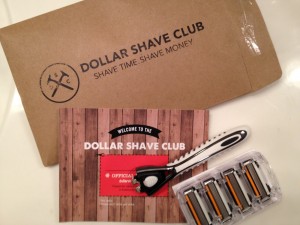SaaS, Deferred Revenue, and The Subscription Model
The subscription business model is one of the oldest models in business theory and yet it remains to be the favourite of many investors. But be warned that it can often be attributed to a business that doesn’t have a great fundamental concept and so the economics and models become the components that take the blame.
At its elementary level the subscription model basically consists of users paying the provider a fee to use a product. Sometimes this fee is a one-time charge, sometimes it is recurring, and sometimes firms will use a mix of both to fully price discriminate the buyer. Generally there are three types of subscription scenarios. In the first one, a user will pay the provider a predefined amount for a fixed set of goods over a defined period. The second type of subscription model involves the user paying a predefined amount for the unlimited use of a product. And finally, the third type of subscription model is one that has been made popular through the recent application of the internet; a user will receive a very limited version of a product for free and is required to activate a paid account to have the premium version available for them. This last model is what is known as “freemium”.
The subscription model started with newspapers and magazines and has evolved to being used across many industries including telecommunications, television, radio, internet, shaving clubs, financial services and even gym memberships. It’s an attractive model of business for many reasons, but first it is important to emphasize that just because the benefits of the model are appealing does not mean that it is a sustainable one. The resilience of this strategy is rooted in the business itself, and so an ideal situation is to pair the subscription based revenue model with a product that has a wide economic moat. The easiest moat to pair this model with is high switching costs, making client retention based around how hard it is for someone to switch to another product. This is where the benefits of the model begin to shine.
The great thing about the subscription model is that it is a source of repeatable revenue. When paired with a fantastic moat, the churn rates are reduced and the repeatable revenue becomes more reliable and can be forecasted easily, making business decisions accurate and less unproblematic. This opens the gateways to strengthen a business even further. Often times these combinations are applied to products that involve recurring purchases, samplings, and even consumable goods.
When using the subscription model in the software industry, a vendor can have a very low price point with extremely fat margins. The software program is written once and sold over and over. If this package is a mission critical piece of software as well, then the model is exploited further. Because of the high switching costs that an essential product has, and the ability for the firm to take payment of the package in advance, a sincere form of customer loyalty is fostered, which then leads to a greater benefit for the vendor. This benefit is the ability for the firm to use the model for matching pricing to economic benefit and therefore save the money that they would spend in search of gains and growth.
Similar to the way a subscription model is used for charging a user for the usage of the product, it can also be used for maintenance and upgrades. Clients can prepay for this or subscribe on an ad hoc basis. When doing an analysis on a firm that acquires revenue through a subscription model a great indicator of its future success is that prepayments that have occurred. A growing deferred revenue number indicates future income; if both revenue and deferred revenue are growing faster than sales, the economic implications on the company are fantastic.
Recently the Internet community has taken a liking to the subscription model with the Software-as-a-service (SaaS) boom. Just like a subscription model, the user uses the software on demand, but now it is hosted in the cloud. This is becoming a very common model for use in various industries, such as accounting, client relationship management, collaboration, content management, and marketing. This model is being incorporated into nearly all enterprise software. But beware; the dangers of this model are starting to become more evident. Users are subscribing to so many things, their bills begin to increase, and they become irritated with never really owning anything. This is called subscription fatigue and is seen as a potential ticking time bomb in the industry. But if you invest in a good company with a competitive advantage and a wide moat, its resilience will push through the tough times and you’ll be left with a fantastic investment and great revenue – such is value investing.








